| From Corning we travelled up to the southern end of Seneca Lake and Watkins Glen. At little further up on the eastern shore we
came across Hector Falls at the side of the road. We also stopped at a winery at Catharine Valley, so named after an Indian princess who helped the
earlier settlers. | 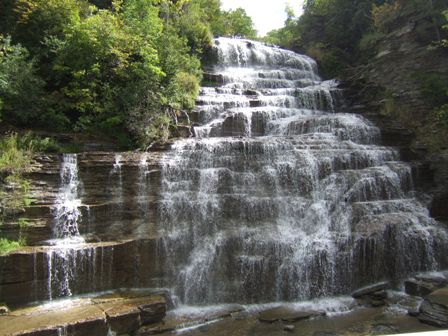 |
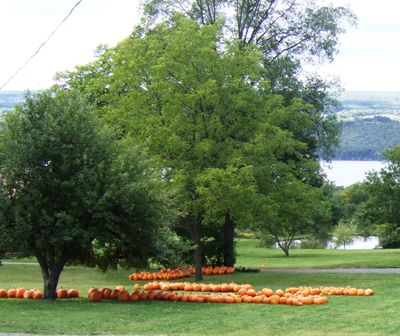 |
A reminder that the time of pumpkins is upon us. This farm had hundred laid
out in the fields in some sort of display. |
| The shop had a wide variety of pumpkins and squashes
for sale, both edible and ornamental. | 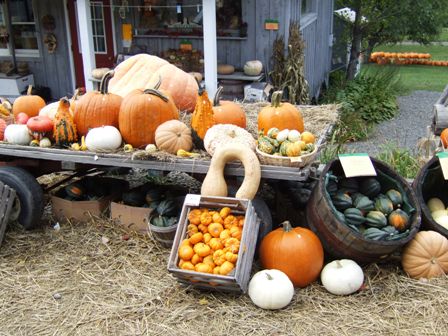 |
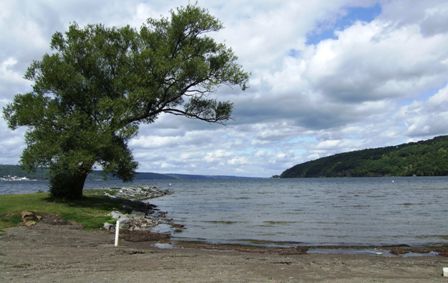 |
We had lunch at Watkins Glen and looked north up the lake. It was quite
windy and there was a definite feel of autumn in the air. |
| The USA is the land of the free and they don't like
being told what they can and can't do or any sort of governmental control.
But the fear of litigation leads to all sorts of limits on their freedom as
shown here. Sensible yes, but in the land of the free? | 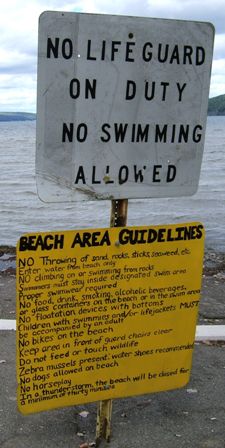 |
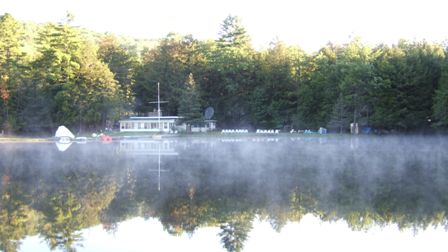 |
We travelled on eastwards towards the Catskill mountains which are really a
collection of hills and valleys. We stopped at a campsite at Windsor with a
small lake which was covered in mist when we woke up in the morning. |
| Later in the day the mist cleared and the trees were
reflected in the lake as we sat and watched the fish. | 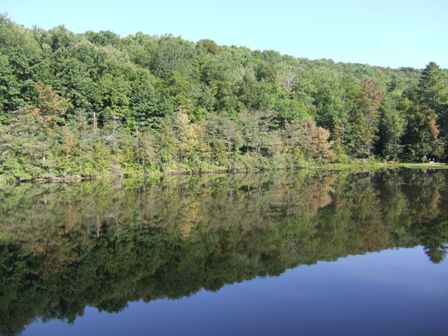 |
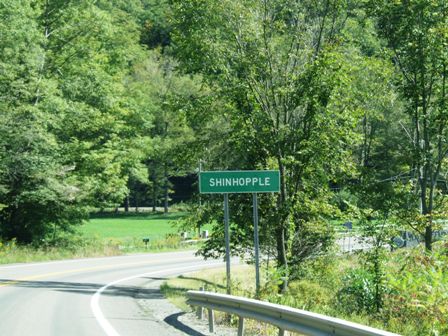 |
There are many names of Indian origin in this area although quite what a
shinhopple is we have no idea, but the name sounds good. |
| There must be thousands of cabooses still in existence
on tiny scenic tourist railways like the Catskill Mountain Railroad which
runs for 12 miles from Phoenicia. This one is not on the tracks and is a
gift shop/cafe. However the railway is only open at the weekend so we had
rather a long time to wait for the next train. | 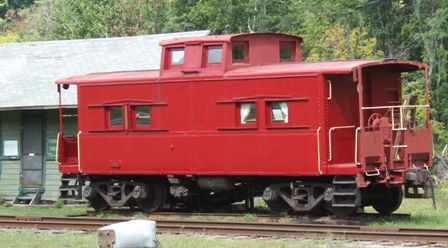 |
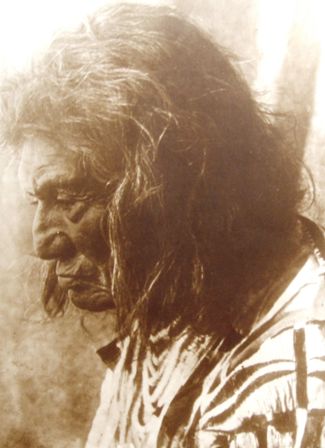 |
We finally reached the Delaware Water Gap where we were staying with our
friends for a week. Close by we found the Poconos Delaware Indian Museum.
This was not terribly inspiring, these places always leave us depressed.
This is a photograph of Cochise, who I thought was an Apache. I suppose it
is Native American. |
| Maybe it is because there are no Delaware Indians
left. This is a photo of the last full-blooded Delaware and she has now
died. Most of them were wiped out with European diseases like smallpox and
measles, some of which were deliberately introduced via 'gifts' of clothing
from infected Europeans. We weren't very nice people really. | 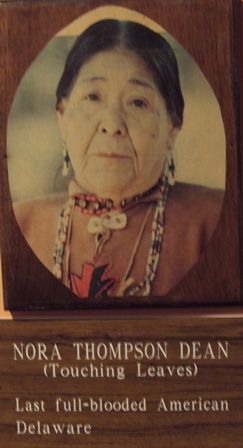 |
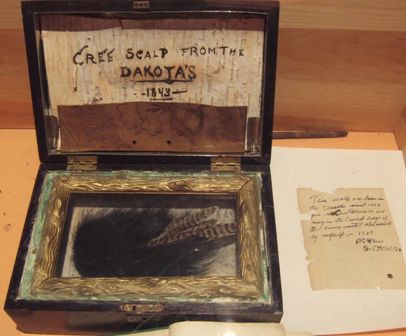 |
Then we had the Cree scalp, taken by a Lakota Sioux and given to Kit Carson
some way from here! |
| This is a collection of pipes. It is considered bad
form to keep the bowl and pipe attached when not in use. But the third one
down has been glued and to separate it would break the bowl. | 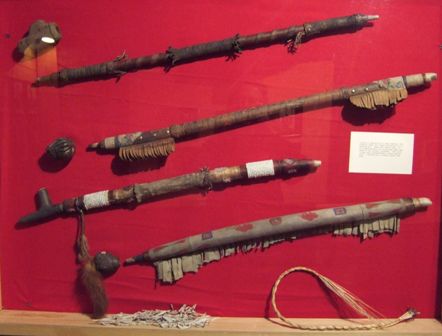 |
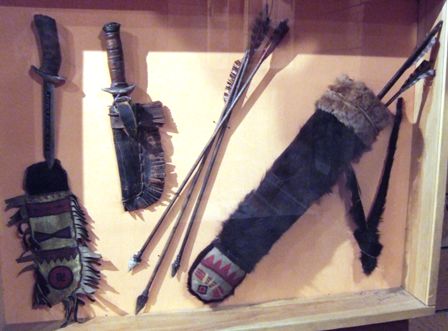 |
A collection of knives and arrows. The arrows were individual and would tell
you who had made them and even for whom. |
| Most native Americans were friendly to the first
settlers and were very knowledgeable about the plants they came across. This
is just part of a large collection of drawings and samples on display of
both edible and medicinal plants. | 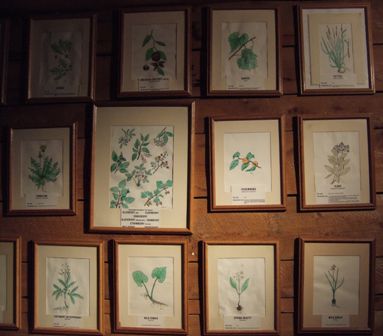 |
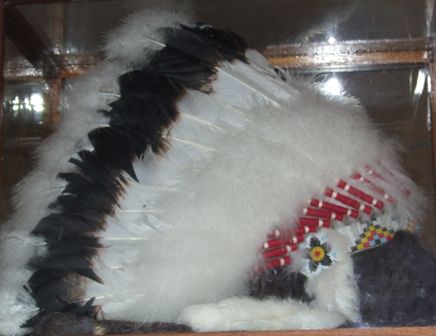 |
A Lakota Sioux war bonnet, which is what we traditionally associate with the
Indians, but the style was actually very limited in its use. |
| This painting on the wall outside is probably more
typical of the warrior but I don't know if it is representative of the
Delaware. They were a peaceable tribe known among themselves as the turtle
people or the Lenape. | 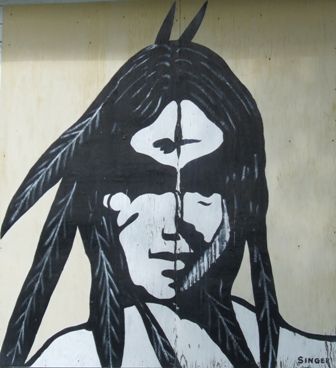 |
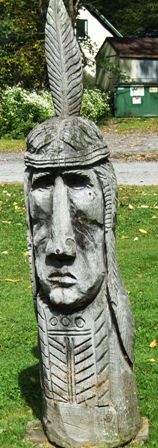 |
Outside are a couple of wood carvings. This style of carving has been very
common throughout New England and eastern Canada. |
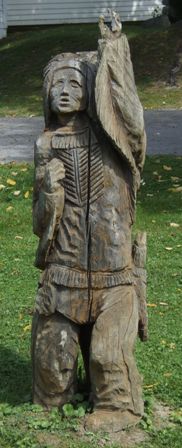 |
|